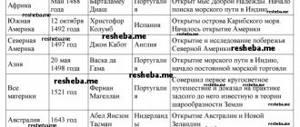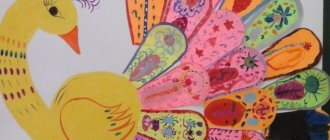Department Angiosperms.
Question 1. Name the main characteristics of flowering plants.
The main characteristics of flowering plants: have flowers and fruits; ovules (ovules), unlike gymnosperms, are enclosed in the cavity of the ovary (hence the name of the department - angiosperms); Double fertilization is typical; the structure of the organs reaches the greatest complexity (compared to other plants), and the tissues have a high degree of specialization, i.e. they are maximally adapted to perform specific functions, such as, for example, in the conductive system; tracheids have been replaced with vessels, which facilitates the passage of water and increases adaptability to life on land; more intense metabolism compared to representatives of other plant divisions; the ability to form complex multi-tiered communities, which ensures more intensive use of the environment and the conquest of new territories.
Question 2. Tell us about the structure of a flower.
A flower is an organ of sexual reproduction and is a modified shoot. It develops on a peduncle, expanding into the receptacle, on which its remaining parts are formed. A calyx is formed from small green leaves called sepals, and a corolla is formed from brightly colored petals. They protect the main parts of the flower - the pistil and stamens from mechanical damage, and the corolla of insect-pollinated plants also attracts insects. Stamens consist of filaments and an anther, where pollen is produced. The pistil has a wide ovary, a thin style and a stigma. Fruits develop from the ovary.
Question 3. What is a fruit?
A fruit is the reproductive organ of flowering plants that develops from a flower.
Question 4. What function does the fruit perform?
The fruit serves to protect and distribute seeds.
Question 5. How is the ovule of angiosperms protected?
The ovule of angiosperms is protected from adverse effects by the ovary.
Question 6. What is the meaning of the flower?
A flower is an organ of seed reproduction. This is a modified shoot with limited growth, adapted for sexual reproduction. In the flower, pollination and fertilization take place, and the embryo and fruit are formed.
Question 7. What life forms are found in angiosperms?
The entire diversity of sporophytic life forms in angiosperms can be reduced to two main types - woody (trees, shrubs and shrubs) and herbaceous. The herbaceous life form is characteristic of most angiosperms. The development of male and female gametophytes in angiosperms is extremely reduced: they are represented by only some parts of the flower - the ovule and the pollen grain.
Question 8. What classes is the department of angiosperms divided into?
In the department of angiosperms, there are two classes: Monocots and Dicotyledons.
Question 9. What characteristics are characteristic of dicotyledonous plants?
The following characteristics are characteristic of dicotyledons: the embryo has two cotyledons; tap root system; leaves with reticulate venation (exception: dicotyledonous plantain has arcuate venation); the number of flower components is a multiple of five, less often four; double perianth.
Question 10. What are the characteristics of monocotyledonous plants? Give examples.
Monocots have the following distinctive features: the embryo of monocots has one cotyledon; the root system is fibrous; leaves with parallel or arcuate venation (exception: monocot raven's eye has reticulate venation); the number of flower components is a multiple of three; perianth simple. The most important families of the class are Poaceae and Liliaceae. Lilies are represented by herbaceous plants, for example various types of onions, garlic; ornamental plants - lilies, tulips, hyacinths, etc. Cereals include wheat, rye, barley, millet, corn, sugar cane, etc.
The solution book contains answers to questions from the educational publication and is presented in an easy-to-read PDF format.
DOWNLOAD WORKBOOK
You can also order an answer to any homework question and receive a ready answer to your e-mail!
ORDER ANSWER
- Gymnosperms
- Table of contents
- Unicellular
Signs of the plant kingdom
Before moving directly to the classification of plants, it is worth remembering that plants have a number of characteristics that are characteristic of all representatives of the kingdom.
Signs of plant divisions
- Plants are capable of autotrophic nutrition. This means that in the process of life, plants synthesize the necessary organic substances from carbon dioxide and water under the influence of sunlight during photosynthesis.
- The cell wall of plants is built from the dense polysaccharide cellulose.
- Most plants lead an attached lifestyle.
- Starch is a nutrient that is stored in plant cells.
- Unlike animals, plants grow throughout their lives.
- Phytohormones regulate plant development processes.
According to the textbook “Biology. 6th grade” edited by I. N. Ponomareva, the plant kingdom is divided into subkingdoms. There is a subkingdom of lower plants and a subkingdom of higher ones. Representatives of the subkingdom of lower plants are algae.
Depending on the complexity of the structure and method of reproduction, seven plant divisions are distinguished, the characteristics of which will be discussed below.
Algae department
Algae are the most primitively organized representatives of the plant kingdom. The body of algae is called thallus
. In structure, these are cells of the same type, among which it is impossible to distinguish individual plant organs.
Algal thallus cells:
- Eukaryotic. The structure of the cell contains a nucleus - the carrier of genetic information.
- Photosynthetic. During photosynthesis, glucose is synthesized from water and carbon dioxide.
- Autotrophic. Organic compounds are synthesized from inorganic compounds.
Due to the presence of a light-sensitive eye ( stigma)
) have
phototaxis
, i.e. they move towards a light source to ensure photosynthesis processes. Reproduction can be asexual - through division of the thallus, and sexual - with the formation of gametes.
Meaning
. Being aquatic plants and producing oxygen as a by-product of photosynthesis, algae provide oxygen and nutritious organic substances to marine inhabitants, are used as food for humans, and are used as feed for livestock. Algae are discussed in more detail on page 110 of the textbook “Biology. 6th grade” edited by I. N. Ponomareva.
Department "bryophytes"
In their structure, bryophytes are more complex than algae, and representatives of the department have a stem and leaves. A distinctive feature is the absence of roots. The function of the root to absorb nutrients from the soil is taken over by rhizoids
.
Meaning
. Bryophytes are capable of accumulating large volumes of moisture, thereby regulating the planet’s water balance. Thanks to the large area of green mass, mosses provide the planet with oxygen. When mosses rot, peat is formed, which is a nutritious substance for other plants and is also used as fuel.
Department "Moss-moss"
Currently, scientists count about 1,000 species, although 350 million years ago, lycophytes, horsetails and ferns were the main representatives of the rich plant world of the ancient Earth. Dying and spending thousands of years in the thickness of the earth, deposits of coal, a valuable mineral, were formed from the remains of plants.
Externally, modern representatives look like mosses. However, the identification of differentiated roots, stems and leaves in lycophytes allowed scientists to classify representatives of the department as higher plants.
Meaning
. Like all plants, lycophytes contribute to the provision of oxygen. From some species, humans have learned to isolate curare-like poison and use it in medicine.
Biology. 6th grade. Workbook No. 1
The workbook was developed for the textbook “Biology. 6th grade" (authors I.N. Ponomareva, O.A. Kornilova, V.S. Kuchmenko), included in the "Algorithm of Success" system. Contains problem and test tasks that allow the teacher to organize differentiated practical work for sixth-graders, form basic biological concepts, effectively control knowledge, involving students in self-assessment of educational activities.
Buy
Department "horsetails"
Like mosses, giant representatives of horsetails inhabited the Earth 300 million years ago. Currently, horsetails are found in the Northern Hemisphere, although researchers may simply not have found horsetails among the rich flora of the Southern Hemisphere, and if you succeed, the Nobel Prize is in your pocket. Already at first glance, the young botanist will accurately determine that this is a representative of the horsetails: whorled leaves in clearly defined internodes are characteristic only of this department.
Meaning
. Despite the fact that horsetail is a weed and, thanks to its powerful rhizome, causes many problems for farmers, it is an indicator of soil acidity and the need to add lime to obtain a high-quality harvest. It is a source of food for wild deer and wild boars. In pharmacology, decoctions and extracts of horsetail are used as a diuretic.
Department "ferns"
Walking through a temperate forest, almost everyone has seen the bright green, wide leaves of ferns. Representatives of the department are numerous and number about 10 thousand species. The stem is poorly developed, and the green mass of leaves significantly prevails over the stem. Adventitious roots help the plant to establish itself well in the soil and receive more nutrients. Ferns reproduce by dividing rhizomes or using spores. Sexual and asexual generations are separated. An adult fern plant is an asexual generation.
Meaning
. Due to their lush green foliage, ferns are used as decorative decorations in garden areas and to saturate the air with oxygen. Some of the representatives are used in cooking to prepare exotic dishes.
Evolution did not stand still, and over the 350 million years that have passed since the reign of ferns, a more advanced method of reproduction has formed on the planet - the seed
.
A seed is a small sporophyte
with a supply of nutrients, a root, a bud and embryonic leaves.
Department "gymnosperms"
Numerous trees, shrubs and vines, whose seeds lack a special closed storage for the ovule and the seed developing from it, belong to the gymnosperm
. The temperate zone of the northern hemisphere is the most suitable habitat for gymnosperms. It is there that the bulk of coniferous plants form the taiga.
Meaning
. Gymnosperm wood is used in construction and the pulp industry as fuel. People use the fruits of some gymnosperms for food (breadfruit). One of the amazing representatives of gymnosperms is sequoia. Some of these majestic trees are over 1000 years old.
Department "angiosperms" or "flowering"
Despite the fact that on the scale of evolution the department is the youngest, flowering plants that delight the eye in flower beds and fields, fruit trees and other species whose seeds are protected make up the bulk of the diverse flora on planet Earth. Currently, their number has reached 250 thousand species and new species continue to be discovered and artificially bred.
Meaning
. This department includes cultivated and wild plants that people use for food. Wood is used in construction work and in furniture production. Extracts from various parts of plants are used in medicine.
Biology. 6th grade. Workbook No. 2
The workbook was developed for the textbook “Biology. 6th grade" (authors I.N. Ponomareva, O.A. Kornilova, V.S. Kuchmenko), included in the "Algorithm of Success" system. Contains problem and test tasks that allow the teacher to organize differentiated practical work for sixth-graders, form basic biological concepts, effectively control knowledge, involving students in self-assessment of educational activities.
Buy
Methodical advice
You can start the lesson with a conversation about the diversity of the plant world and ask students to name the plants. If a task was given for the summer to collect a herbarium, students show their herbariums and tell where the plants were collected (field, forest, meadow, garden, etc.).
During the conversation, the teacher brings the children to the fact that more than 200 thousand wild and cultivated plants are currently known, and without knowledge of systematization it is impossible to study them all. Then you can invite the children to read messages No. 1 and No. 2 from the list below.
With the help of the teacher's leading questions about the structure of the root, stem, seeds and demonstration of visual material, the children determine the differences between the various sections of plants. Students read out the rest of the reports.
List of topics for preparing messages yourself:
- Botany: from Theophrastus to the present day
- Carl Linnaeus - father of taxonomy
- Coal - fuel or witness to history
- The world of plants in cooking: from algae to angiosperms







